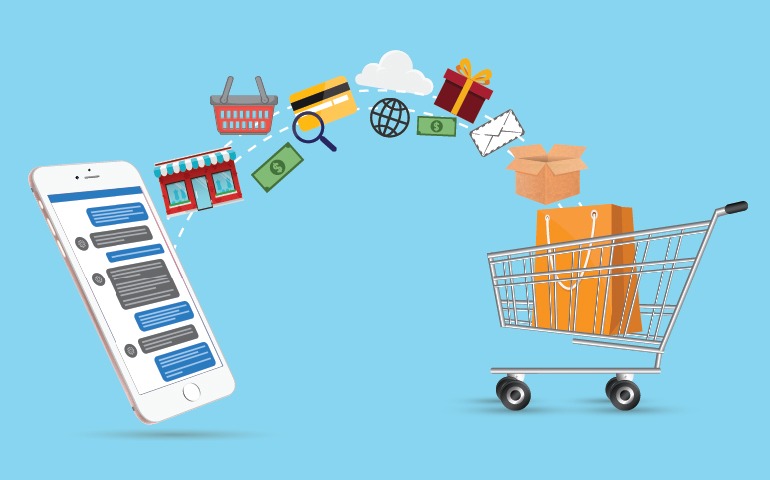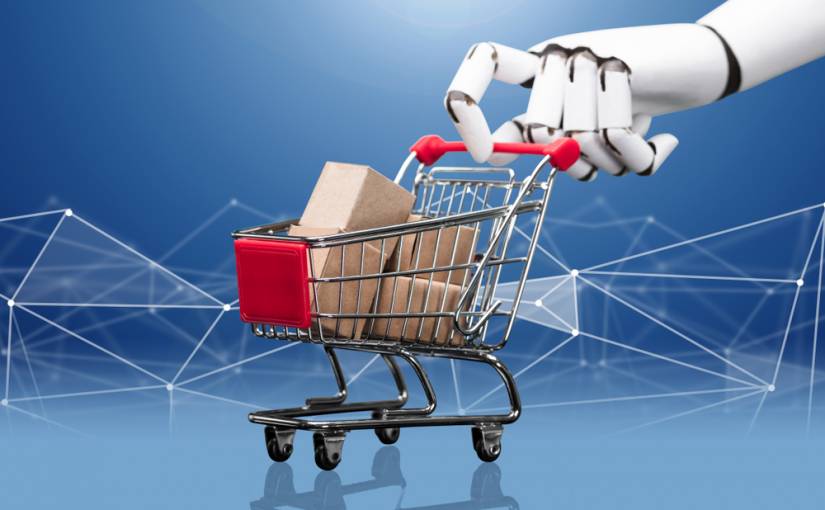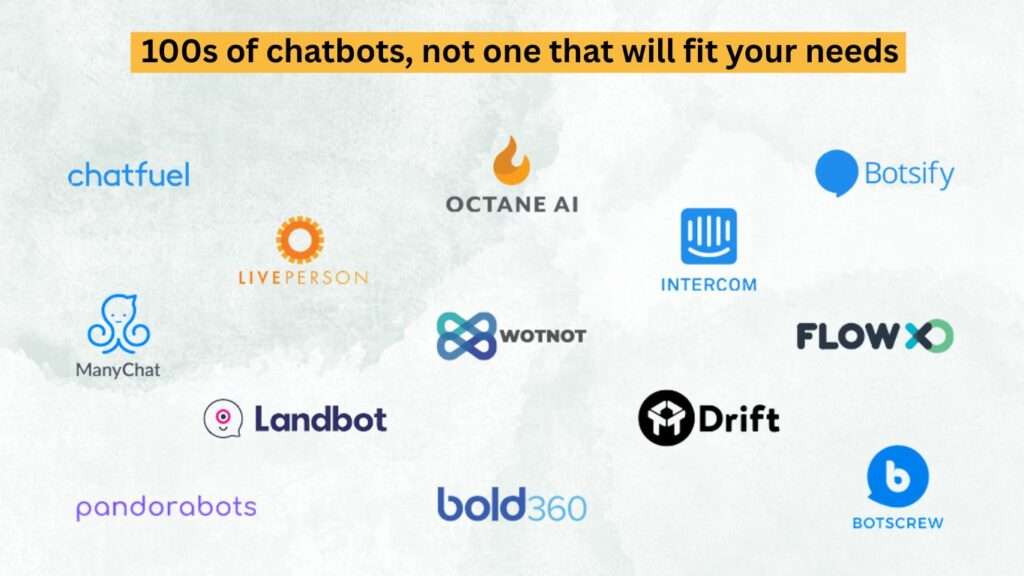Integrating chatbots into e-commerce isn’t just a tech upgrade; it’s a transformative strategy reshaping online shopping.

In the bustling realm of online commerce, where every click counts, businesses are in a perpetual quest for strategies to boost conversion rates. One innovative solution that has emerged as a game-changer is the integration of Chatbots into e-commerce platforms. In this blog post, we’ll explore the multifaceted journey of how Chatbots can be the catalyst in overcoming challenges, enhancing user experience, and ultimately boosting e-commerce conversion rates.
Understanding the E-commerce Challenge
E-commerce, despite its unprecedented growth, grapples with a myriad of challenges when it comes to converting visitors into customers. The traditional online shopping experience often lacks the personal touch and real-time interaction that brick-and-mortar stores provide. Shoppers may abandon their carts due to a variety of reasons, ranging from uncertainty about product details to concerns about the security of the transaction process.
Challenges Faced by Businesses in Converting Visitors to Customers
1. Uncertain User Intent:
Visitors often land on e-commerce websites with varying levels of intent. Some may be casual browsers, while others are actively seeking to make a purchase. Determining the intent of each visitor is challenging, and businesses need to tailor their approach to cater to diverse user motivations.
2. Information Overload:
E-commerce websites typically offer a plethora of products, and navigating through an extensive catalog can be overwhelming for visitors. The abundance of choices can lead to decision paralysis, causing potential customers to abandon their shopping journey without making a purchase.
3. Complicated Navigation:
A user-friendly interface is crucial for a positive online shopping experience. If the website navigation is confusing or if users struggle to find the products they’re looking for, frustration can set in, leading to a higher likelihood of visitors leaving the site without completing a purchase.
4. Lack of Personalization:
Personalization is a key element in converting visitors into customers. If the website fails to provide a personalized experience, such as tailored product recommendations based on previous interactions or user preferences, visitors may feel that their needs are not being addressed, diminishing the likelihood of conversion.
5. Inadequate Product Information:
Insufficient or unclear product information is a major barrier to conversion. Visitors may hesitate to make a purchase if they lack comprehensive details about a product, including specifications, usage guidelines, or customer reviews. Clear and detailed product information is essential for building trust and confidence in potential buyers.
6. Security Concerns:
Security is a paramount concern for online shoppers. If visitors perceive any security risks during the checkout process, such as unclear information about payment security measures or a lack of trust indicators, they are likely to abandon their carts, fearing potential data breaches or fraudulent activities.
7. Absence of Real-time Assistance:
The absence of real-time assistance can be a significant hurdle. If visitors encounter difficulties or have specific questions that remain unanswered, the lack of immediate support can result in frustration and deter them from completing their purchase.
8. Mobile Optimization Issues:
With the increasing prevalence of mobile shopping, businesses need to ensure that their websites are optimized for a seamless mobile experience. If the site is not mobile-friendly or if there are usability issues on mobile devices, businesses risk losing a substantial portion of potential customers who prefer to shop on their smartphones or tablets.
9. Limited Payment Options:
Offering a limited range of payment options can be a hindrance. Customers have diverse preferences when it comes to payment methods, and if a website does not support the preferred payment option of a visitor, it may result in cart abandonment.
10. Shipping and Return Concerns:
Understanding and addressing these challenges is crucial for businesses aiming to optimize their conversion rates. By implementing strategies that mitigate these obstacles, such as leveraging Chatbots for real-time assistance, optimizing website navigation, and providing comprehensive product information, businesses can create a more user-friendly and conversion-oriented online shopping experience.

How to Increase E-commerce Conversion Rates with ChatBot
- Instant Engagement: Chatbots kickstart engagement the moment a visitor lands on the website. A friendly greeting coupled with a prompt inquiry about the user’s needs sets the stage for a personalized experience. This instant engagement captures the visitor’s attention and encourages them to explore further.
- Product Recommendations: Leveraging artificial intelligence, Chatbots analyze user behavior and preferences to provide tailored product recommendations. By understanding the customer’s tastes and preferences, Chatbots guide them through the product selection process, increasing the likelihood of a successful conversion.
- Real-time Assistance: During the crucial checkout phase, Chatbots step in to provide real-time assistance. Addressing concerns about payment security, offering clarification on shipping options, or resolving any issues encountered during the checkout process, Chatbots act as reliable companions, reducing the chances of cart abandonment.
- Interactive Customer Support: Chatbots aren’t confined to pre-purchase interactions. They continue to serve customers post-purchase by providing order updates, tracking information, and handling inquiries. This post-purchase support enhances the overall customer experience, contributing to customer satisfaction and loyalty.

The Benefits of Using Chatbots for Different Departments
- Customer Service: Chatbots significantly enhance customer service by providing instant responses to frequently asked questions. This not only reduces the workload on human customer support agents but also ensures that customers receive timely assistance, fostering positive interactions.
- Marketing: The data collected by Chatbots can be a goldmine for marketing departments. Analyzing customer interactions and preferences allows businesses to tailor marketing campaigns, personalize promotions, and target specific customer segments more effectively.
- Sales: In the sales domain, Chatbots act as virtual sales assistants, guiding customers through the purchase journey. By understanding customer needs and recommending products, Chatbots contribute to upselling and cross-selling opportunities, maximizing revenue.
- Data Insights: The data-driven nature of Chatbots provides valuable insights into user behavior, preferences, and pain points. This information empowers businesses to make informed decisions, optimize their strategies, and continually refine the user experience for maximum impact.
Conclusion
In conclusion, the integration of Chatbots into e-commerce platforms isn’t just a technological upgrade; it’s a transformative strategy that holds the potential to reshape the online shopping landscape. By addressing the challenges of engagement, providing personalized assistance, and offering continuous support, Chatbots emerge as indispensable allies in the pursuit of elevated conversion rates. As businesses embrace this digital evolution, the synergy between technology and customer-centricity will undoubtedly pave the way for a new era of e-commerce success.
For more such amazing content follow us here!




